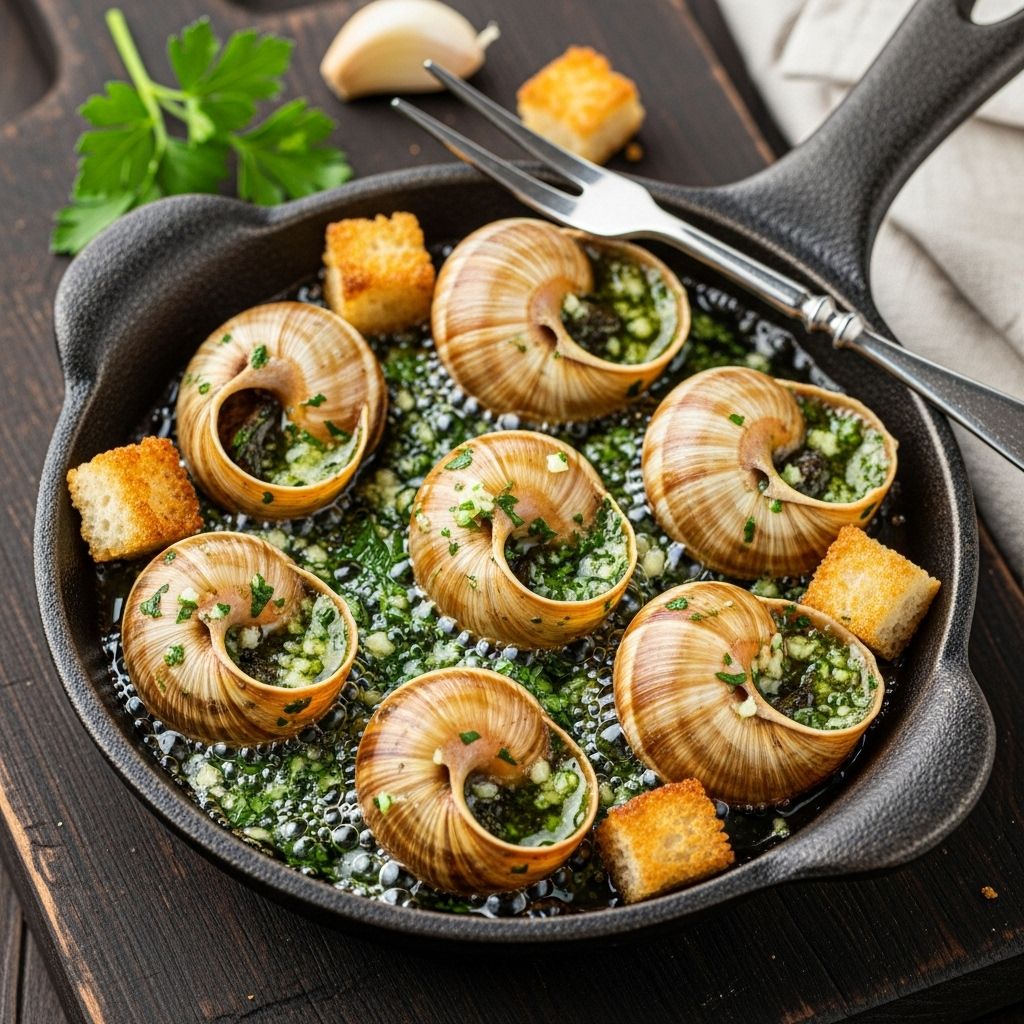Escargot: A Gastronomic Journey Through Benefits, Uses, and Taste
Exploring the Rich World of Escargot

Table of Contents
- What is Escargot?
- History of Escargot
- Preparing Escargot
- Benefits of Escargot
- Uses of Escargot
- Taste and Culture
- Frequently Asked Questions (FAQs)
What is Escargot?
Escargot is a celebrated French dish made from land snails, typically served as an appetizer. It is renowned for its rich flavor profile, which is enhanced by ingredients like garlic, parsley, and butter. The dish is a quintessential emblem of French gastronomy, reflecting the country’s culinary sophistication and tradition of fine dining.
History of Escargot
The history of escargot dates back to ancient times, with evidence of snail consumption found in various cultures around the world. The Romans are credited with cultivating snails in gastropod farms and recognizing them as a delicacy. In France, escargot became popular during the Renaissance, often served at lavish banquets in the royal court. The Burgundy region is especially famous for its escargot, known as “escargots à la Bourguignonne,” which features snails bathed in garlic and parsley butter.
Preparing Escargot
Preparing escargot involves several intricate steps. First, snails are carefully selected and cleaned to ensure their purity. They are then coated with a mixture of garlic and parsley butter, which is the hallmark of the dish. Finally, the snails are baked in their shells, allowing them to absorb the flavors of the butter. This method ensures that the snails remain moist and tender, contributing to the dish’s rich taste.
Benefits of Escargot
Escargot is not just a culinary delight; it also offers several nutritional benefits. Snails are low in calories and rich in protein, making them a healthy addition to a balanced diet. They contain essential nutrients like iron, vitamin E, and antioxidants, which can help boost the immune system and support overall health. Here are some of the key benefits of escargot:
- Rich in Protein: Snails are an excellent source of protein, which is essential for building and repairing body tissues.
- Low in Calories: Escargot is a low-calorie food, making it ideal for those looking to manage their weight.
- Good Source of Iron: Snails are rich in iron, which is crucial for maintaining healthy red blood cells.
- Antioxidant Properties: Escargot contains antioxidants that help protect against oxidative stress and inflammation.
Uses of Escargot
While escargot is primarily known as a dish, snails have various uses beyond the culinary world. In some cultures, they are valued for their purported medicinal properties, although more research is needed to confirm these claims. Additionally, snail farming (heliculture) provides a sustainable source of food and income for many communities.
Taste and Culture
The taste of escargot is a blend of the snail’s natural flavor with the robust flavors of garlic and parsley butter. It is often served at special occasions and is a staple in French haute cuisine. Culturally, escargot represents a connection to French tradition and elegance, symbolizing the country’s deep appreciation for fine dining and culinary heritage.
Frequently Asked Questions (FAQs)
Q: What are the health benefits of consuming escargot?
A: Escargot is rich in protein, low in calories, and contains essential nutrients like iron and antioxidants, making it a healthy dietary choice.
Q: Where is escargot most commonly consumed?
A: Escargot is most commonly consumed in France, particularly in the Burgundy region, but it is also enjoyed in other parts of Europe and around the world.
Q: How do you prepare escargot?
A: Preparing escargot involves selecting and cleaning snails, coating them with garlic and parsley butter, and baking them in their shells.
References
- https://www.secretfoodtours.com/blog/escargot-everything-you-should-know/
- https://en.wikipedia.org/wiki/Snails_as_food
- https://www.tastingtable.com/918784/the-ancient-origins-of-escargot/
- https://www.britannica.com/animal/escargot
- https://www.etymonline.com/word/escargot
- https://www.smithsonianmag.com/history/from-peasant-fodder-to-fine-dining-feast-the-tasty-history-of-how-snails-and-oysters-became-luxury-foods-180986695/
- https://www.offbeatfrance.com/snails-in-france-escargots.html
Read full bio of Sneha Tete












